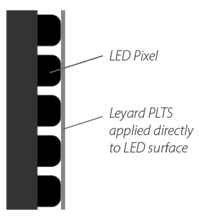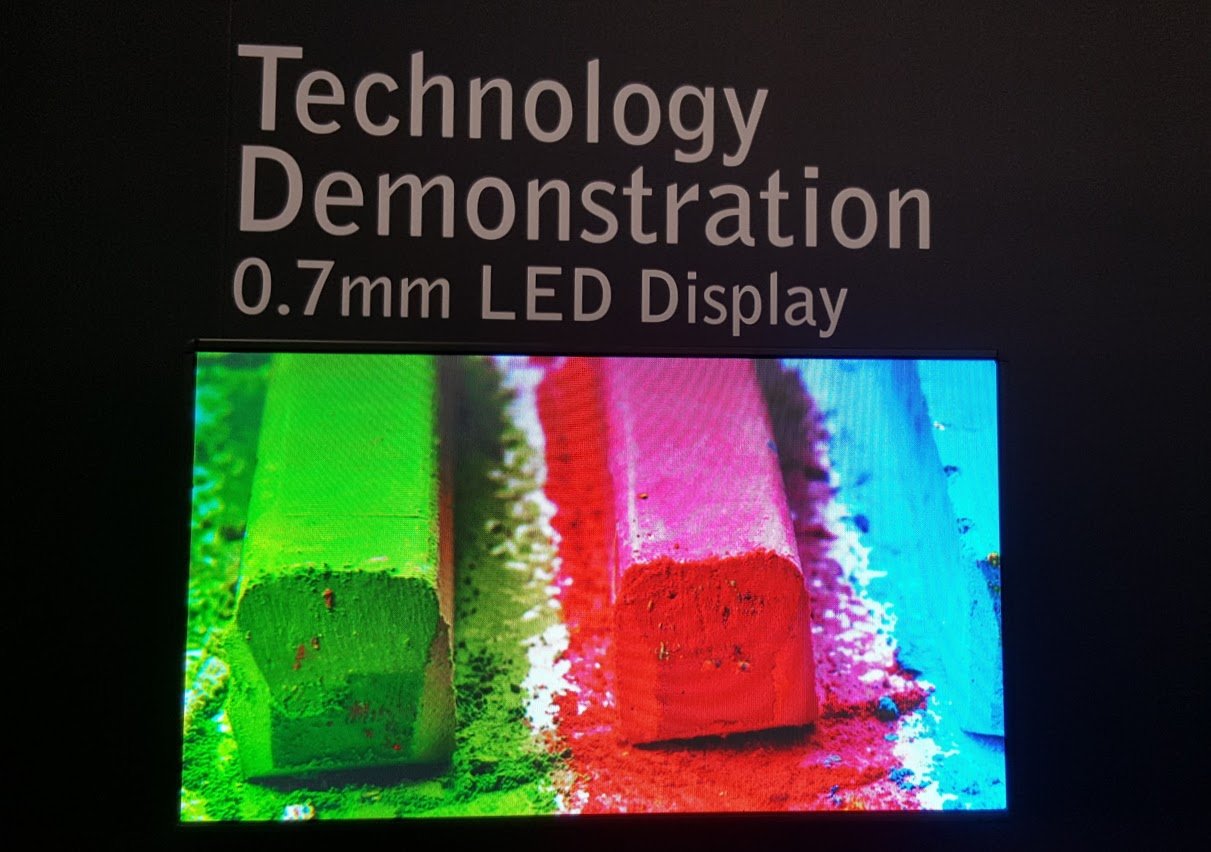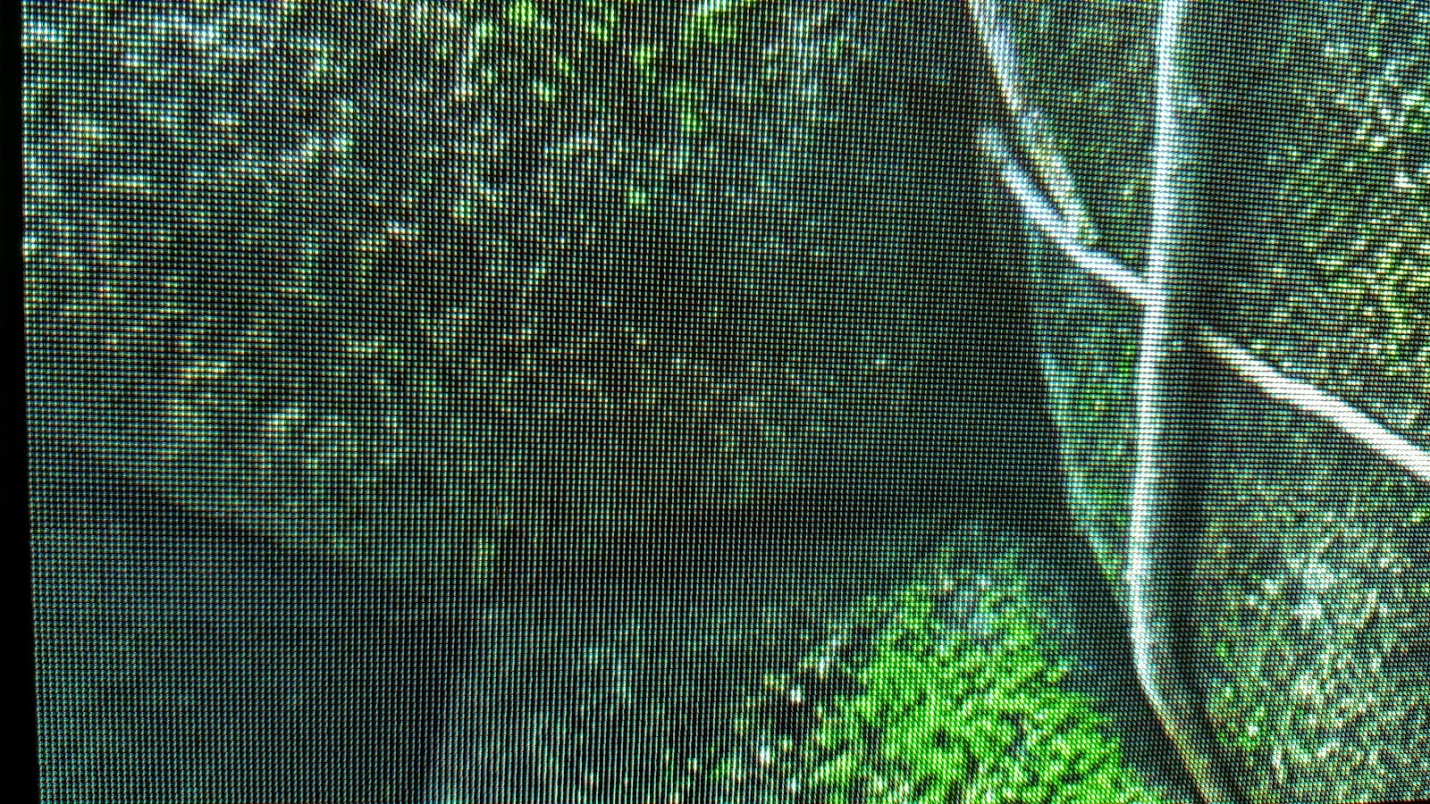
Leyard Debuts Overlay That Enables Multi-Touch On Fine-Pitch LED Video Walls
April 24, 2017 by Dave Haynes
Leyard is at the 2017 National Association of Broadcasters (NAB) Show this week in Las Vegas, showing a fine pixel pitch LED video wall that supports multi-touch interactivity.
It’s an overlay of some kind, but isn’t glass, so it doesn’t cause glare or, more importantly, trap the heat that can build up from all those LEDs. It uses Pliable LED Touch Surface (PLTS), a technology China-based Leyard has in the patent process.
“Up until now, adding touch to a high resolution LED video wall was an exercise in frustration and compromise for customers,” says Steve Seminario, VP product marketing at Leyard and Planar, in a press release. “With Leyard LED MultiTouch, we are able to provide the fully integrated and seamless touch experience customers have asked for, without compromising performance or increasing cost-of-ownership.”
Leyard argues adding touch capability opens up fine pitch LED video wall tech opportunities until now limited to LCDs and rear-projection cubes. “From broadcast to corporate settings to education institutions, Leyard LED MultiTouch offers a seamless touch experience for LED video walls up to 196-inches diagonal with high resolution 1.2mm pixel pitch,” says the release.
 Among the touted benefits:
Among the touted benefits:
- MultiTouch that allows for up to 32 simultaneous touch points;
- Anti-glare surface that eliminates reflections that can occur in well-lit environments;
- Durable and easy to service: “PLTS touch surface material is extremely durable, protecting the video wall from damage that can occur from casual contact or debris getting on the display, while avoiding the heat that is commonly trapped in protective glass installations. The lightweight touch surface can easily be removed and then reapplied, making it easy to service. It is also straightforward to clean, requiring only a simple cleaner and cloth;”
- Lightweight and thin, so it has minimal impact on the mounting depth of the video wall.
Very interesting. The lack of interactivity possible with LEDs has undoubtedly been a bit of a hang-up for some video wall applications where interactivity was required.
I saw a company at InfoComm China two weeks ago demo-ing an interactive video wall with infrared edge sensors that enabled a touch-like experience on a Leyard LED, but naked LEDs on a fine-pitch wall are not intended for touch and will get dirty and damaged around the general public. This kind of overlay – Leyard’s must be almost like a rigid film that is permeable and allows heat buildup to diffuse – would offer some protection.
At InfoComm China: @VentuzTech demo’ing LED wall made interactive with IR sensors. Neat, but think LEDs wouldn’t survive the general public pic.twitter.com/90BNXCaAze
— 16:9 – All Digital Signage, Some Snark (@sixteennine) April 12, 2017
The Sony micro LED wall they’ve shown at InfoComm and ISE also seems to have some sort of film over it (but wasn’t touted as touch-enabled).
That said, the general rule of thumb is that the optimal viewing distance is 10 feet for every 1mm. So that means a 1.2mm pixel pitch display like this interactive Leyard wall is best seen from 12 feet back. So, let’s cut that in half to six feet, and no one’s arms are long enough to reach out and touch that screen.
You can get up close and touch with this, but the visuals up that close may appear broken up – particularly text and fine lines and edges. At 1-2 feet away, you can see the individual LED diodes on a fine pitch LED.
That may put some limits on who uses this, but a lot of that can also be solved through careful planning on the content and the user experience. No one’s going to use this to look at the engineering drawings for a hydro plant, but it will work fine for things like a hospital donor wall or surveillance camera wall.
Leyard is also showing a 27-inch 0.7mm pixel pitch LED video at the show. I’m not sure if it was Leyard’s I saw at ISE a few weeks ago, but here’s a shot of what I saw, up close.





Leave a comment